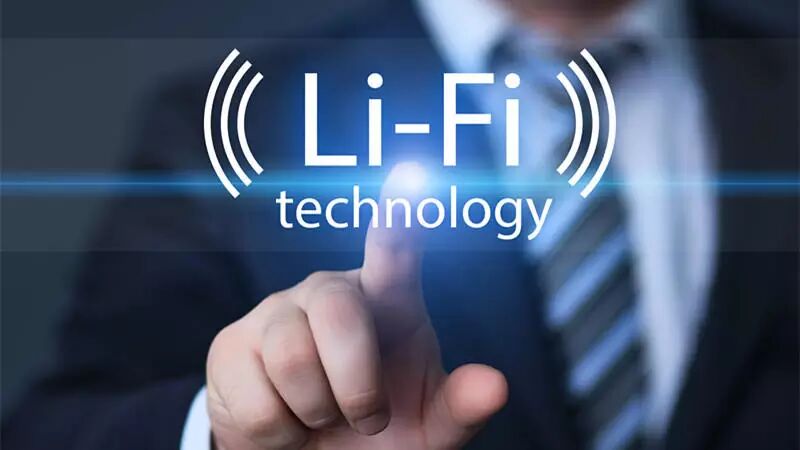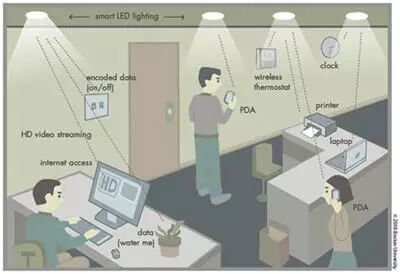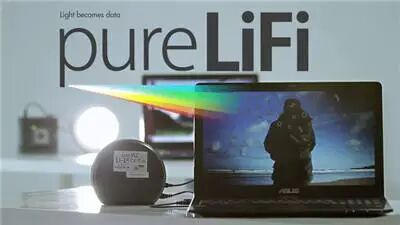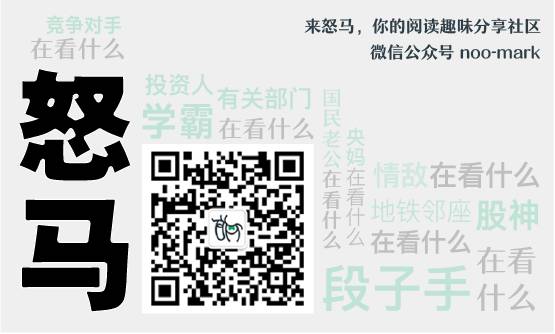
This morning, news broke that the iOS code contains the term “Li-Fi,” causing a wave of excitement among tech blogs abroad. Is Apple really going to adopt Li-Fi technology in iPhones?
Here’s the situation: A keen-eyed Twitter user first discovered that starting from iOS 9.1, the system library cache files included a statement about the “LiFiCapability” (Li-Fi compatibility) feature. The tech blog AppleInsider subsequently confirmed this news.
 Image from AppleInsider
Image from AppleInsider
However, compared to Wi-Fi, the concept of Li-Fi may be much less mainstream. So before we figure out Apple’s intentions, let’s first understand what Li-Fi really is.
Surfing the Internet with Lights: 224GB of Data Transfer in One Second
The working principle of Li-Fi is somewhat similar to that of our familiar infrared remote controls. Data is first modulated into a light source and transmitted rapidly as light signals, which are then received by a photodetector and reconstituted into electrical signals.
But unlike remote controls, Li-Fi utilizes visible light. By equipping ordinary LED bulbs with microchips, they can be controlled to flicker millions of times per second, with the light on representing 1 and off representing 0. This means that in the future, ordinary LED bulbs in homes could potentially become gateways to the Internet. Moreover, since the flickering frequency of the bulbs is too fast for the human eye to perceive, you don’t have to worry about being “blinded” by your own light bulbs.

So, how fast is Li-Fi? Theoretically, the data transfer rate using Li-Fi can reach 224GB/s, which is equivalent to 100 times that of Wi-Fi. It’s almost embarrassing to mention downloading HD movies…
According to Pacific Computer Analysis, compared to Wi-Fi, Li-Fi not only offers faster speeds but also at least two other significant advantages. First, Wi-Fi relies on invisible radio waves for transmission, which increases device power and consequently local electromagnetic radiation; wireless signals can penetrate walls, making network information less secure. These security risks can be avoided with visible light communication. Secondly, this network requires almost no new infrastructure.
Will Li-Fi Replace Wi-Fi? Let’s Wait and See
But don’t get too excited just yet; Li-Fi technology is still in the experimental stage. In simple terms, Li-Fi has three major limitations.
First, light signals cannot penetrate walls. This is the fundamental reason why Li-Fi is considered more secure than Wi-Fi (try to piggyback on someone else’s network now~), but it also greatly disrupts the online experience (the world has added another layer of malice towards overweight individuals: sorry, you’re blocking my Li-Fi signal~). If you want uninterrupted internet access at home, you’ll need to ensure that every room has smart bulbs equipped with chips. Additionally, if the photodetector goes out of the light range, communication will be forced to stop.
Second, it cannot be used outdoors. This is because outdoor sunlight and other ambient light are too strong and can interfere with signal transmission, which means that Li-Fi cannot replace Wi-Fi in public places at least for the time being. However, there are technologies that can filter indoor light sources, allowing users to utilize Li-Fi for normal communication even in bright indoor sunlight. With advancements in technology, perhaps outdoor light filtering will soon be a reality? Of course, for now, Li-Fi is still viewed as a supplement to Wi-Fi networks in most cases.
Finally, Li-Fi can only support unidirectional communication. This means that Li-Fi signals can only be transmitted from smart bulbs to smart devices, but cannot be sent back from the devices. So, if you want to turn on a light and check WeChat from your bed, the simplest Li-Fi system still won’t allow that. However, according to reports from Sohu, the French Atomic Energy Commission’s electronic information technology research institute (CEA Tech/Leti) has developed a Li-Fi technology that supports bidirectional communication, which is currently under testing.
How is Apple Planning to Use Li-Fi?
The code exposed by Twitter users indicates that Apple has introduced Li-Fi technology into the software domain. However, Apple’s research and development of Li-Fi hardware may have already begun.
In 2013, Apple applied for a patent titled “Using Image Sensors for Light Modulation.” The patent mentions that this type of sensor can switch between image capture and data capture modes without additional hardware, enabling light communication, which is essentially what we refer to as a Li-Fi transmitter.
This move also shows that Apple has never relaxed its efforts in exploring next-generation communication technologies. In 1999, when Wi-Fi was as novel as Li-Fi is today, Apple launched the iBook, the first laptop with built-in Wi-Fi, making it a pioneer among its peers.
However, given that Li-Fi is still fraught with bugs, it may not be realistic to expect to see this technology in the iPhone 7.
Is There Anyone Better than Apple at This?
Apple is not the only company fascinated by Li-Fi. In fact, the inventor of “Li-Fi,” German physicist Harald Haas, founded a company called pureLiFi. He and his team have been dedicated to researching Li-Fi technology since 2008, aiming to develop the company into a recognized leader in the Li-Fi technology field.
Currently, pureLiFi has launched two products: Li-1st and Li-Flame. According to the pureLiFi website, Li-1st is a plug-and-play near-field Li-Fi communication system that supports bidirectional communication, with a total upload and download speed of 11.5MB per second (equivalent to the first generation of Wi-Fi). Compared to its predecessor, Li-Flame seems more suitable for public spaces like conference rooms rather than small spaces like studies or offices. The Li-Flame system also supports bidirectional communication, with upload and download speeds reaching 10MB per second.
 Li-1st
Li-1st
Additionally, Estonian tech company Velmenni has also begun to explore Li-Fi technology. CEO Deepak Solanki told IBTimes: “We are working on some VLC (Visible Light Communication) pilot projects suitable for different fields.”
Similar to pureLiFi’s approach, Velmenni’s products are also divided into two paths: enterprise and personal users. “We have already designed a smart lighting communication system suitable for industrial environments, and we also have a project for personal users, which is a Li-Fi system being designed for offices,” Solanki said.
Finally, French tech company Oledcomm has begun considering installing Li-Fi communication devices in local hospitals.
Li-Fi Rhapsody
Beyond internet access, Li-Fi may have broader applications. For example, using car headlights for “vehicle-to-vehicle communication” could reduce traffic accidents; in mining accidents, Li-Fi communication could assist in rescue operations; in deep-sea environments, Li-Fi could be used for communication between submarines.
All of these are technologies that have been successfully developed or are in development. Velmenni CEO Solanki predicts that in another 3-4 years, this technology will reach the consumer market. The changes brought by new technologies may come faster than we expect.
